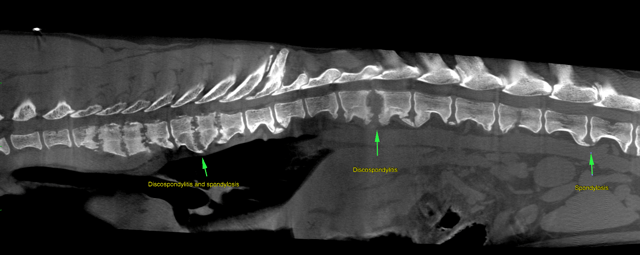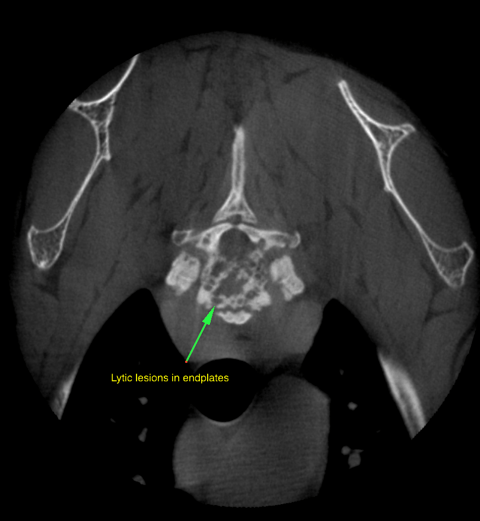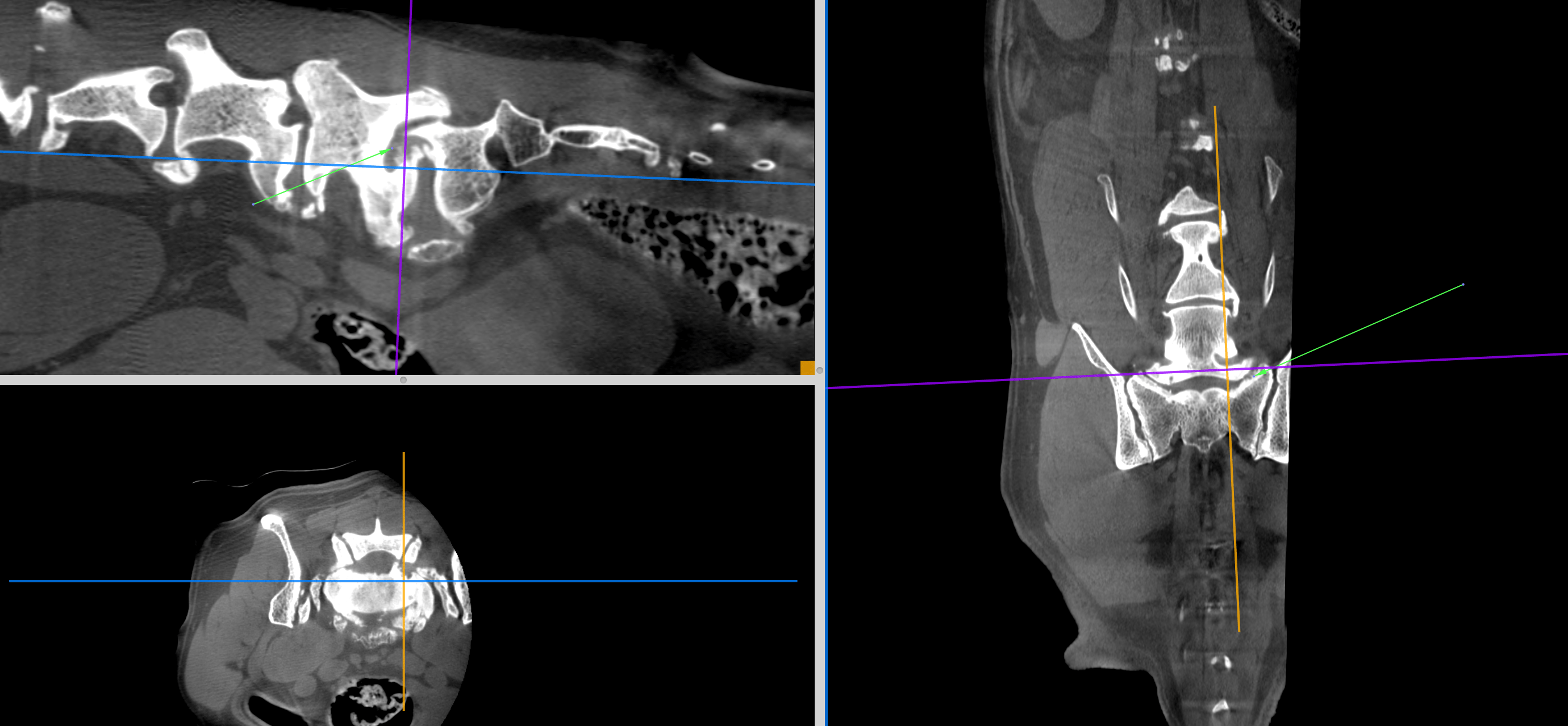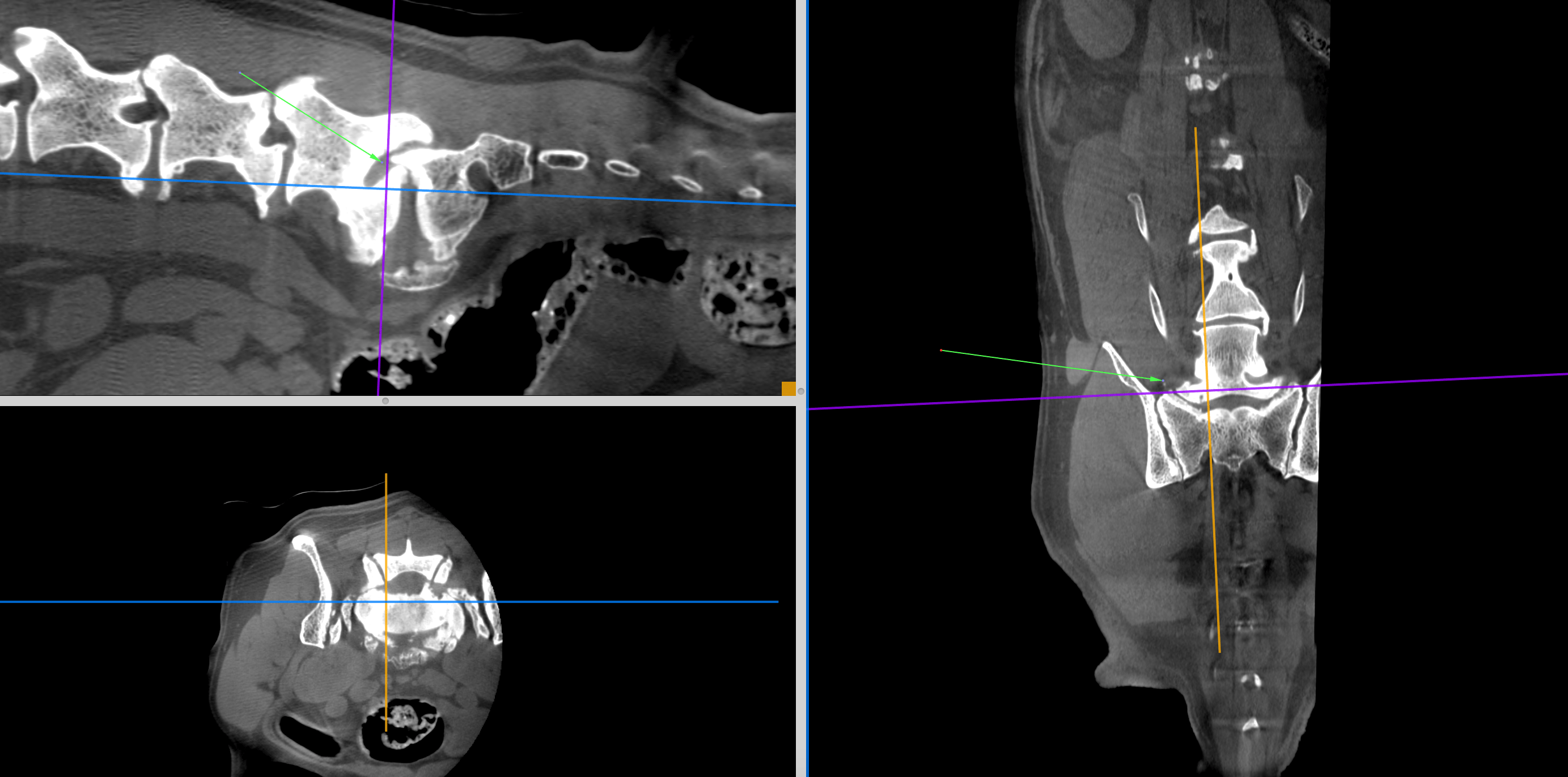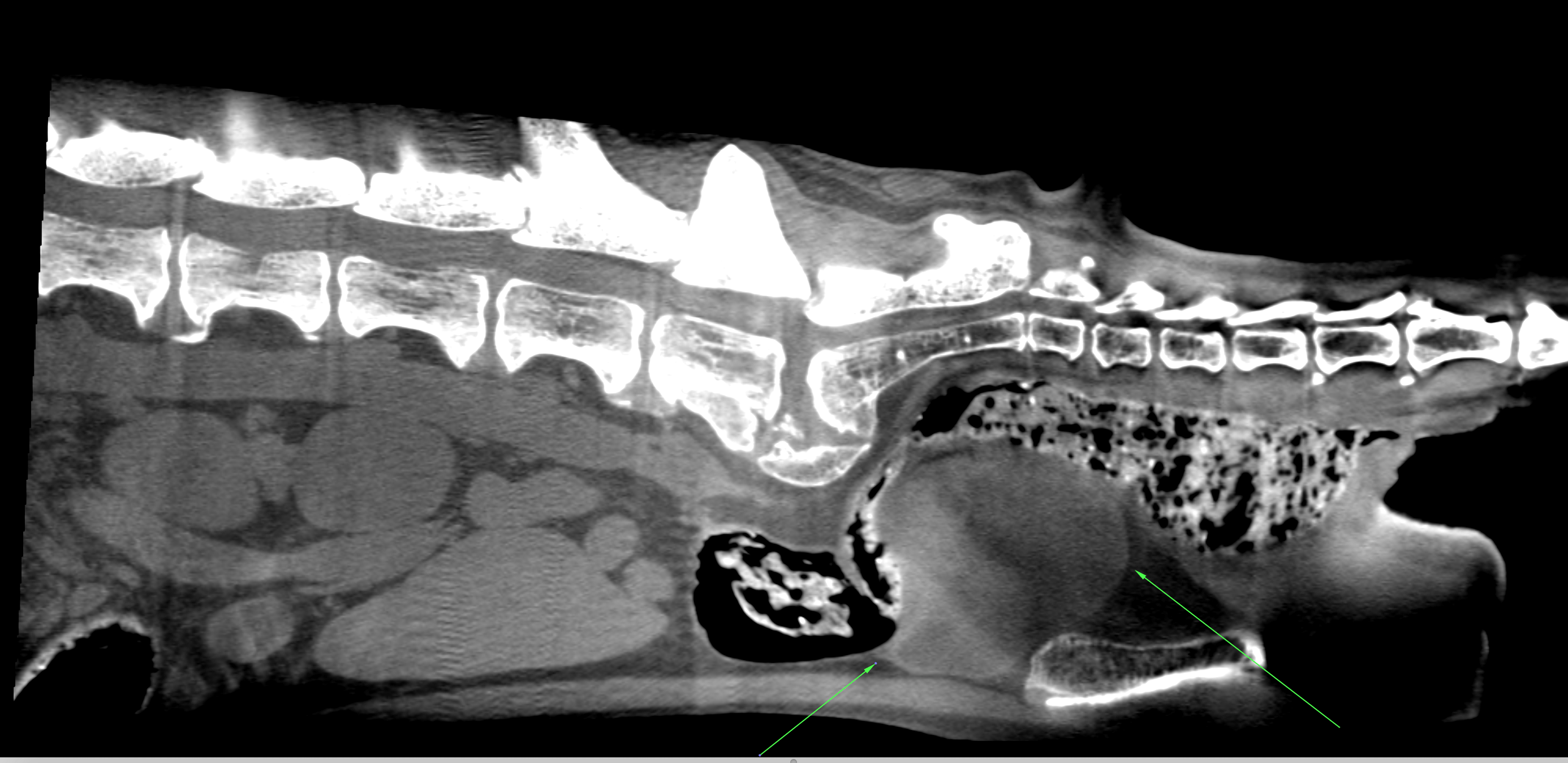During a routine exam at the rDVM 6 weeks ago it was determined that the patient had lost weight. There is a long history of osteoarthritis and urinary incontinence.The recommendation was to increase food intake from 3 cups per day to 4 cups per day for a few weeks to see if the weight would return to normal (about 74 pounds). Upon recheck a few weeks later the weight had stabilized but not returned to normal. Bloodwork showed elevated protein. Full spinal radiographs were done, followed by referral for CT. Fungal serology on 6/25 was negative. The patient is eating well and drinking more than normal, unsure whether clincial issue or due to warmer weather. No V/D. No history of seizures or allergies. Medications include Proin 25mg BID, no vitamins or supplements.
Exam Findings: Weight: 70.8 pounds (7/10/2015) Pulse: 90; Respiration Rate: pant; CRT: 2 MM; Color: P/M, hydrated
Temperature: not taken due to owner request. BAR, with a body condition score of 5/9. Eyes, ears, nose and throat appeared normal. A moderate amount of dental calculus was noted on the teeth, and the canine teeth were very worn. The coat was full with no evidence of ectoparasites. On auscultation the heart and lungs sounded normal with no murmurs or arrhythmias noted. Abdominal palpation was within normal limits with no masses or organomegaly noted. Neurologic system appeared to be normal. The gait was normal at a walk and trot today. Musculoskeletal system appeared to be within normal limits. There were no abnormalities noted on orthopedic examination. Pain Scale (Colorado 0-4) – 1/4 (slightly painful with pressure on lumbar spine.
